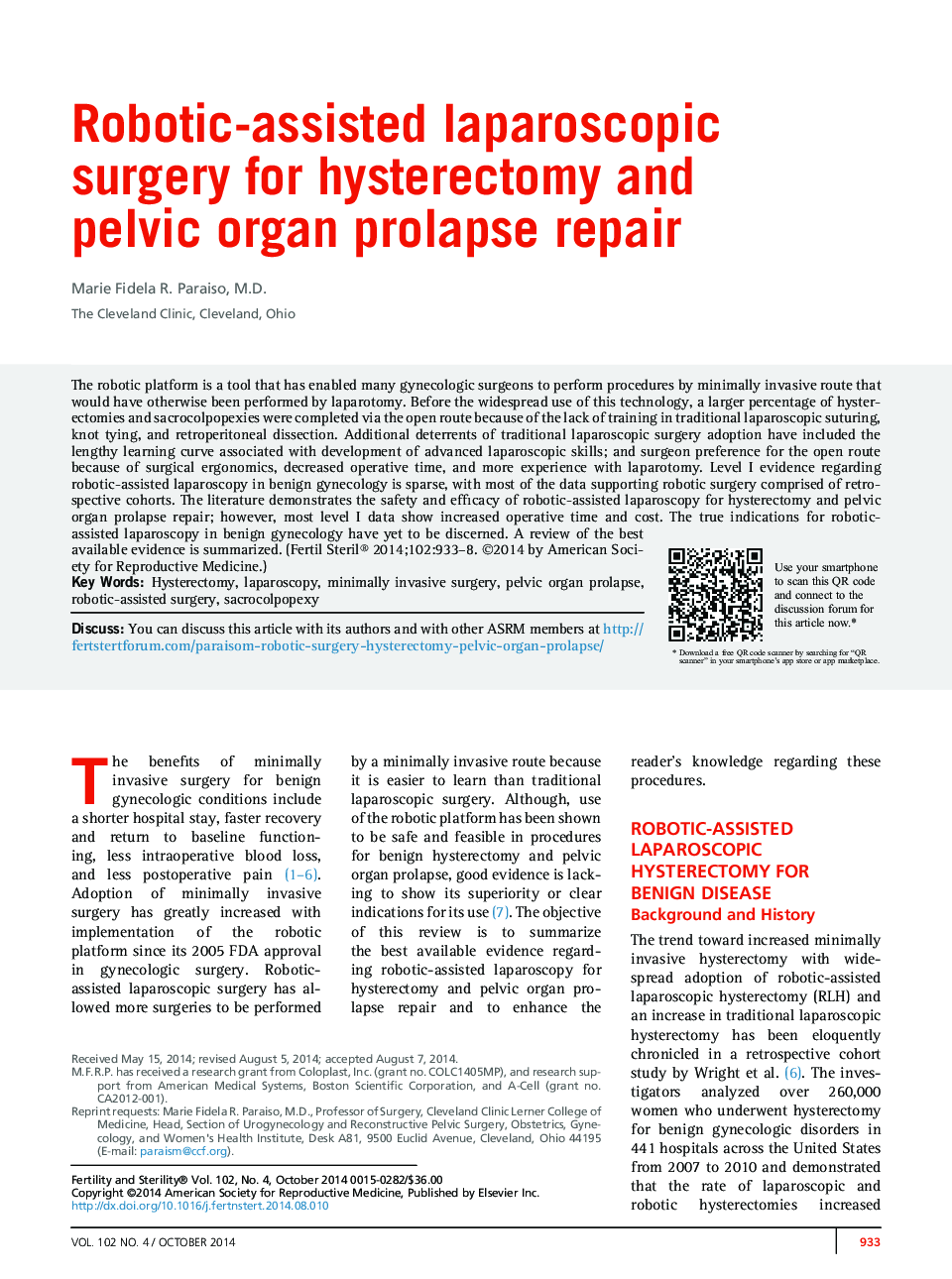| Article ID | Journal | Published Year | Pages | File Type |
|---|---|---|---|---|
| 6181439 | Fertility and Sterility | 2014 | 6 Pages |
Abstract
The robotic platform is a tool that has enabled many gynecologic surgeons to perform procedures by minimally invasive route that would have otherwise been performed by laparotomy. Before the widespread use of this technology, a larger percentage of hysterectomies and sacrocolpopexies were completed via the open route because of the lack of training in traditional laparoscopic suturing, knot tying, and retroperitoneal dissection. Additional deterrents of traditional laparoscopic surgery adoption have included the lengthy learning curve associated with development of advanced laparoscopic skills; and surgeon preference for the open route because of surgical ergonomics, decreased operative time, and more experience with laparotomy. Level I evidence regarding robotic-assisted laparoscopy in benign gynecology is sparse, with most of the data supporting robotic surgery comprised of retrospective cohorts. The literature demonstrates the safety and efficacy of robotic-assisted laparoscopy for hysterectomy and pelvic organ prolapse repair; however, most level I data show increased operative time and cost. The true indications for robotic-assisted laparoscopy in benign gynecology have yet to be discerned. A review of the best available evidence is summarized.
Keywords
Related Topics
Health Sciences
Medicine and Dentistry
Obstetrics, Gynecology and Women's Health
Authors
Marie Fidela R. M.D.,
